
Where gold meets silver


In a dense corner of Africa in a land dotted by the dramatic, forested figures of ancient volcanoes, a trio of countries protect just over half of the world’s remaining mountain gorillas. Destinations like Virunga and Volcanoes National Parks have become synonymous with mountain gorilla trekking and conservation, but there is a third national park, so often forgotten, that forms the final corner of the triangle. Uganda’s Mgahinga Gorilla National Park is a small park that packs an astonishing biodiversity punch and offers some of Africa’s most exclusive gorilla trekking.
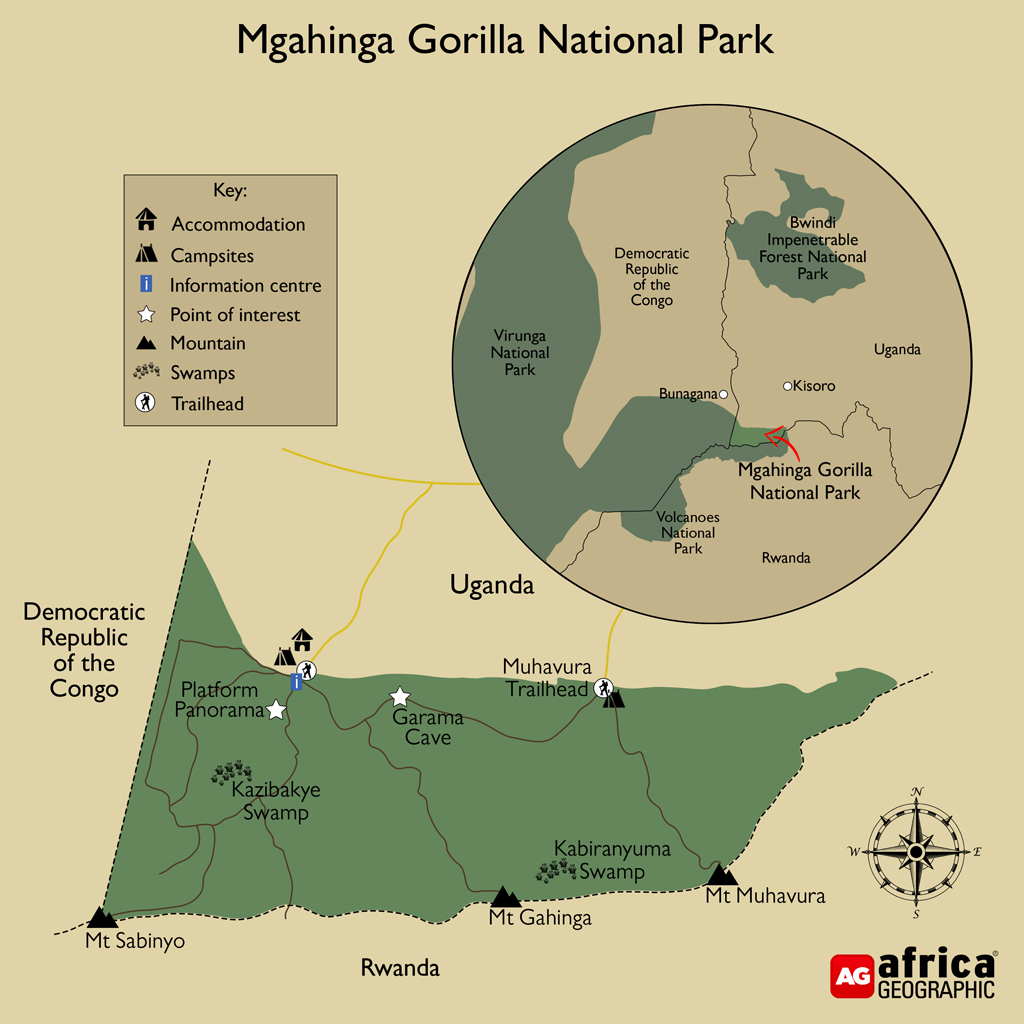 *Cover image: Mark, the 40-year-old leader of the Nyakagezi gorilla family, enjoys some alone time in the dense bamboo forest of Mgahinga. For more images from Michael Stavrakakis, check out @pics.stavtook on Instagram.
*Cover image: Mark, the 40-year-old leader of the Nyakagezi gorilla family, enjoys some alone time in the dense bamboo forest of Mgahinga. For more images from Michael Stavrakakis, check out @pics.stavtook on Instagram.
Mgahinga Gorilla National Park
At just 34 km2 (3,400 hectares), Mgahinga Gorilla National Park is Uganda’s smallest national park, tucked away in the country’s southwestern corner. With Rwanda’s Volcanoes National Park to the north and Virunga National Park in the Democratic Republic of Congo to the west, Mgahinga completes the trifecta of parks protecting the Greater Virunga Ecosystem. Shaped by ancient (and relatively modern) volcanic forces, this primaeval landscape is known for its phenomenal scenic beauty and extraordinary biodiversity. It also protects just over half of the world’s remaining mountain gorillas.
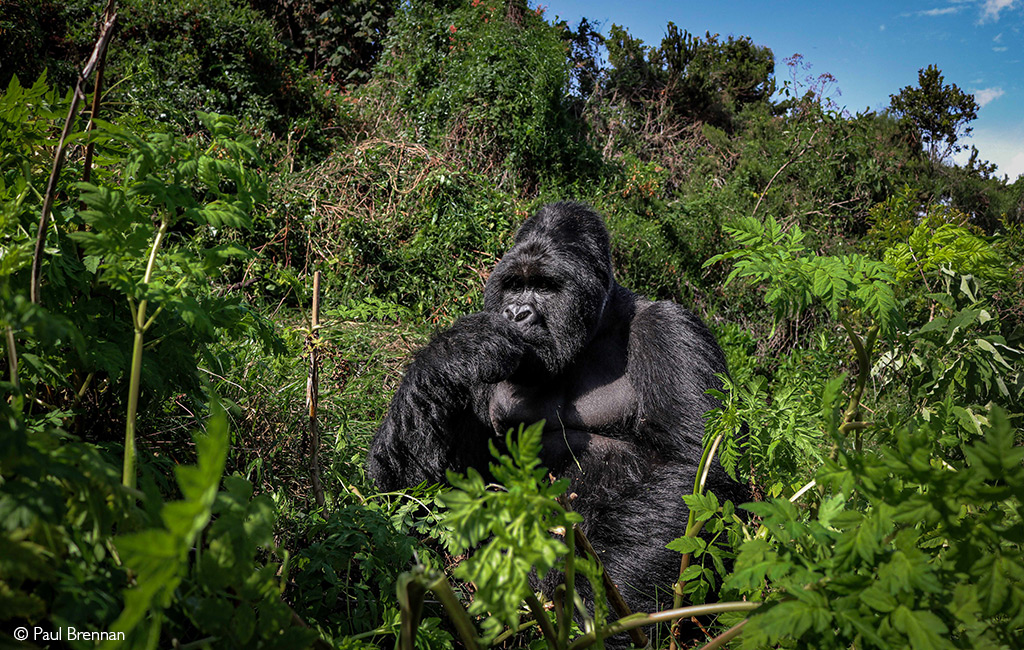
The topography of the region is dominated by the looming forms of the eight Virunga volcanoes, of which three extend into Mgahinga Gorilla National Park: Muhavura (4,127 m), Gahinga (3,474 m), and Sabinyo (3,645 m). Unlike the two active volcanoes in neighbouring DRC, these peaks no longer explode at unpredictable intervals. Instead, their forested slopes support a plethora of life, from the celebrated mountain gorillas and coiffured golden monkeys to slinking leopards and an array of endemic birdlife.
 Want to plan your African safari to meet the gorillas and golden monkeys of Mgahinga? We have ready-made safaris to choose from, or ask us to build one just for you.
Want to plan your African safari to meet the gorillas and golden monkeys of Mgahinga? We have ready-made safaris to choose from, or ask us to build one just for you.
The dramatic changes in altitude also ensure that despite Mgahinga’s relatively small size, the park is a mosaic of diverse habitats. Steaming swamps give way to the verdant green of bamboo forests, which then melt into the dense Albertine Rift montane habitat at higher altitudes. Incongruously, at such tropical latitudes, the peaks of the iconic volcanoes are sparsely covered with alpine zones and moorland.
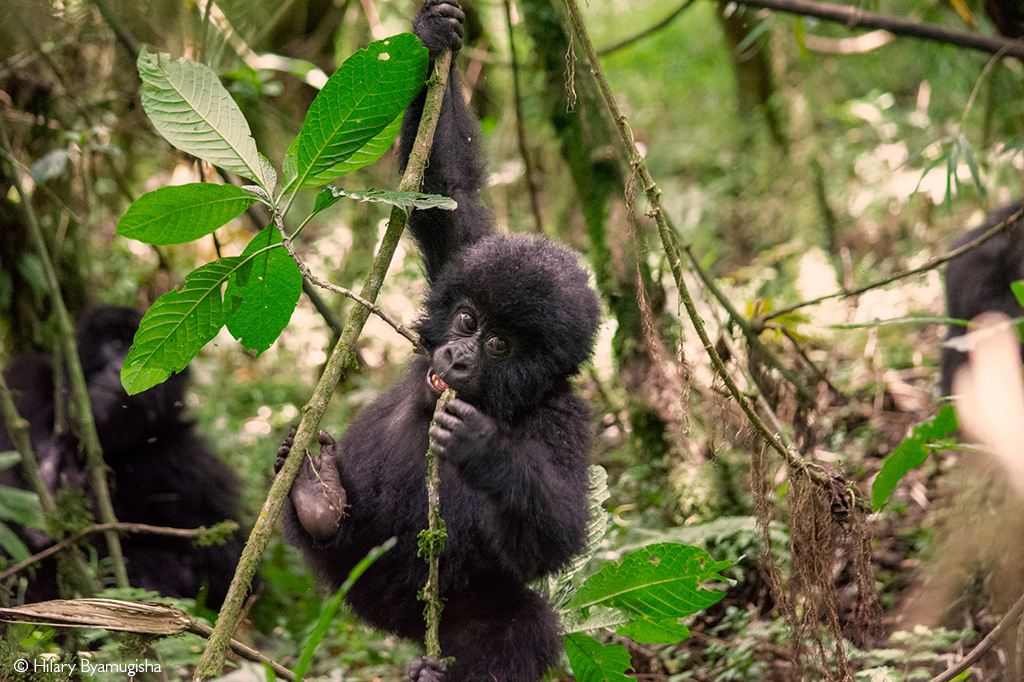

Precious primates – silverbacks and golden monkeys
Regarding the Ugandan gorilla trekking experience, Mgahinga has traditionally been overshadowed by Bwindi Impenetrable National Park, which lies some 50km to the north and is home to the country’s only other population of mountain gorillas. This is partly because Mgahinga’s habituated gorilla family – the Nyakagezi family – have occasionally been known to cross the park’s boundary into Rwanda. However, in recent years, they have been all but resident on the Ugandan side of the ecosystem, and encounters are increasingly reliable.
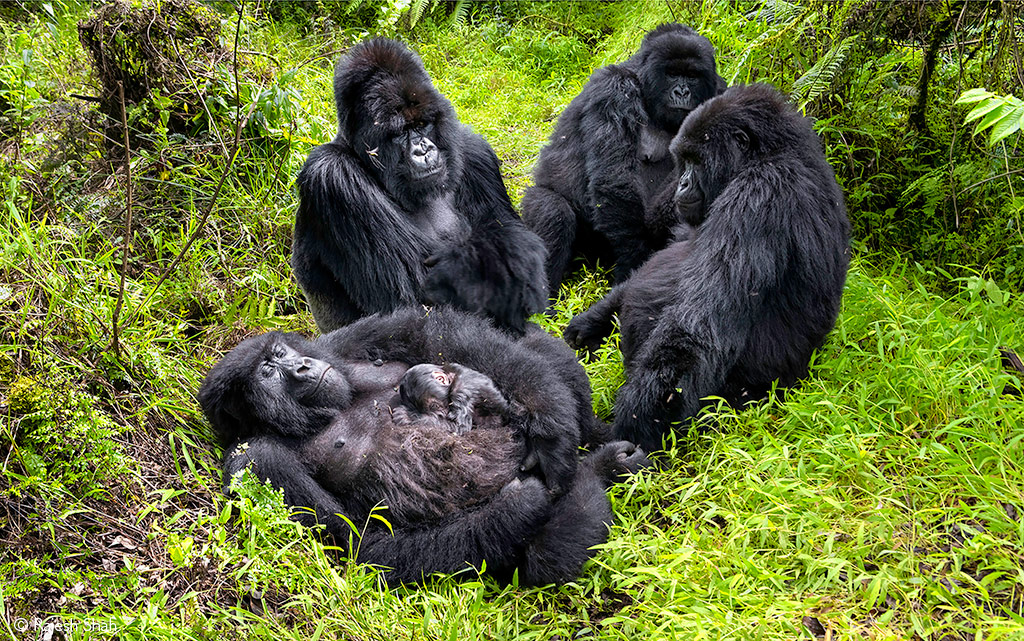
Not for nothing is gorilla trekking considered a safari bucket list essential. Though the time spent with gorillas is strictly limited to prevent over-exposure, the impact of such an encounter makes an indelible impression on the human soul. Though the hike through the forest can be physically demanding, the reward at the end is a goosebump-inducing meeting with our sentient relatives.
Naturally, the gorillas are the stars of a visit to Mgahinga, but they have found stiff competition in their bright-eyed smaller cousins, the golden monkeys. These unique endangered animals are restricted to the highland forests of Central Africa and are found only in a handful of national parks, of which Mgahinga is one. They are named for their mottled gold facial mask and are usually found snacking on bamboo stalks. With the success of well-established gorilla trekking as a conservation model, park authorities have similarly habituated troops of these primates so that they can be observed without affecting their day-to-day behaviours. Visitors to Mgahinga can opt for the standard trek or spend several hours with the habituation team.


Kingdom Animalia
The rich volcanic soils and moist tropical climate have ensured that the Greater Virunga Ecosystem is a hotbed for floral and faunal diversity. Moreover, scientists studying the region believe that much of the eastern Congo basin was an ice age refugia, which escaped the worst of the glacial conditions that once blanketed the earth. Consequently, endemism levels are high, particularly when it comes to the feathered residents of the forest. Challenging though forest birding may be, Mgahinga is home to an impressive list of bird species, including several Albertine Rift Valley endemics and many more specials of the Afrotropical mountain habitat.
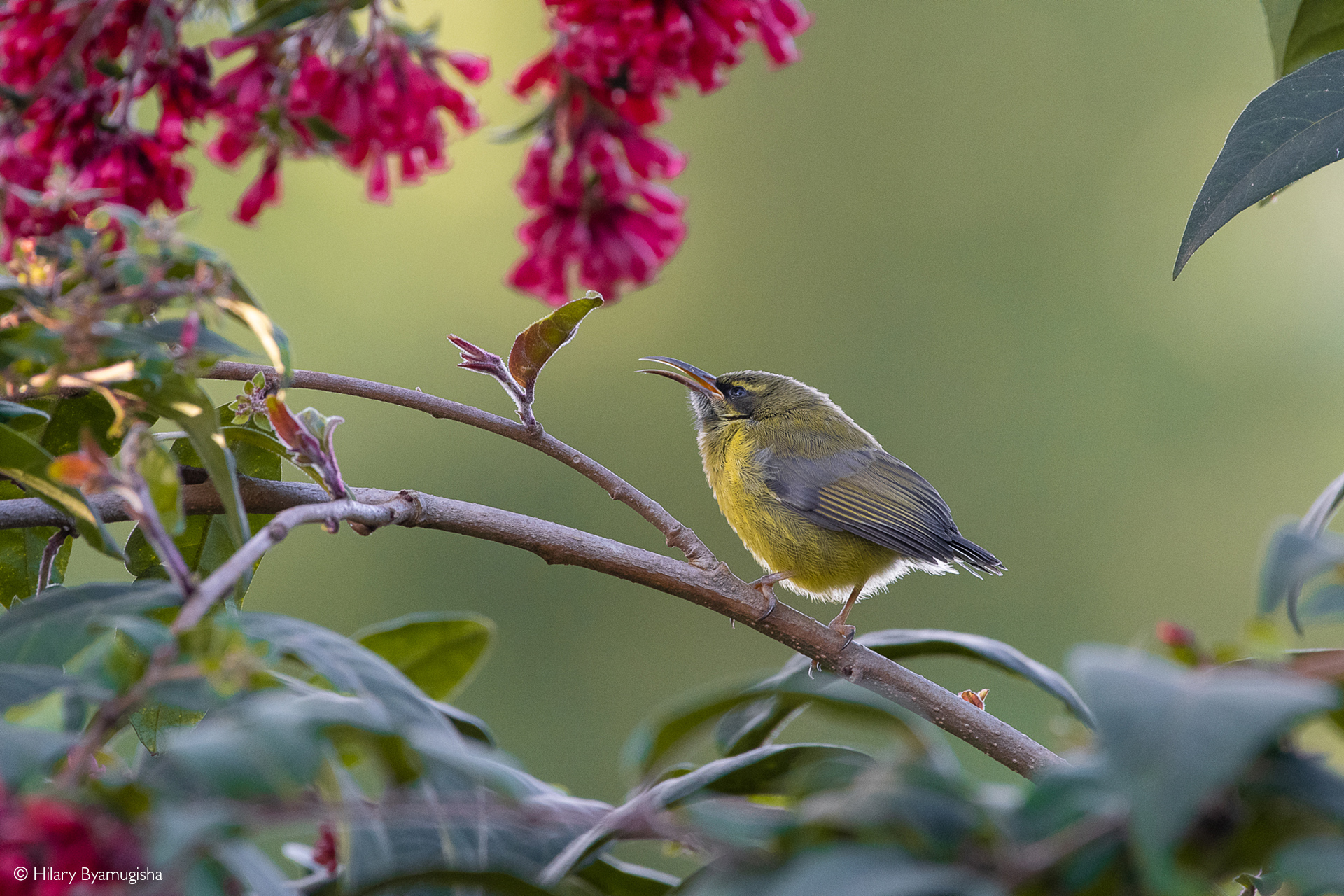
A hike along forest paths (perhaps serenaded by the melodious Kivu ground thrush) will reveal the dramatic flashes of African pittas and Rwenzori turacos. At the same time, a more strenuous route to the lobelias at the top of the volcanic peaks may be rewarded by the sight of scarlet-tufted sunbirds. True to its name, the Grauer’s swamp warbler can be heard singing its little heart out in the reeds of the Kabiranyuma and Kazibakye swamps in competition with the vocal handsome francolin on the peripheries. Further into the forest, sunbirds abound, with regal, blue-headed, and Rwenzori double-collared sunbirds all contributing to the kaleidoscope of colour. The company of one of Uganda’s expert bird guides will unlock the park’s full birding potential, and eager aviphiles will find themselves dashing from dusky crimsonwings to Rwenzori batises and then on to the search for a montane nightjar.
For those who can tear their eyes away from the primate and avian extravaganza, the trails are decorated in butterflies of every shape and colour. Sharp-eyed visitors (or, more likely, the experienced guide) may even be lucky enough to spot one of the park’s rare Jackson’s chameleons – a three-horned creature that looks for all the world as though it sprang from the time of the dinosaurs. Elephants, leopards, giant forest hogs and bushpigs are all present in the forest but are shy and seldom encountered.
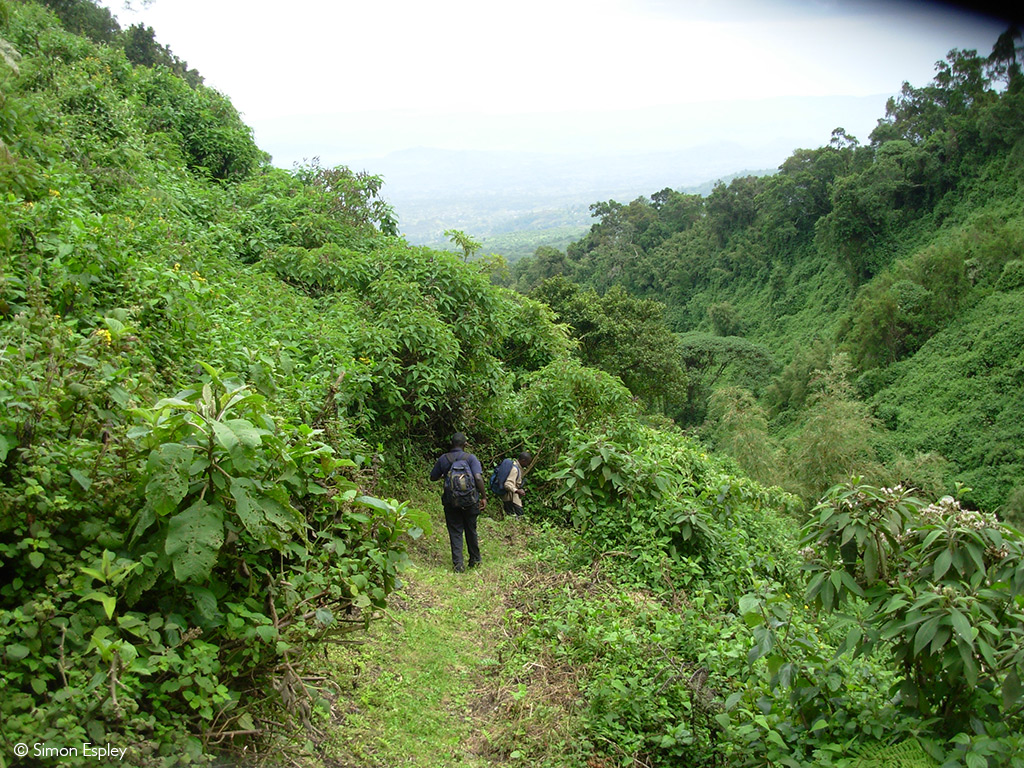

Meandering in Mgahinga
With such abundant natural marvels, it isn’t difficult to understand why hiking is such a popular activity in Mgahinga. The well-kept trails range from short excursions and nature walks to full-day adventures up one of the three volcanic peaks to take in the panoramic views over Uganda, Rwanda and the DRC. The hike through Sabinyo Gorge is particularly favoured by birders but enchanting for visitors looking to explore the fantastical scenery and vegetation on display.
Another popular excursion is a trip to the Garama Cave, which extends some 342 metres beneath a plateau and is of sacred significance to the local Batwa people. In the gloom of the cave, conflict councils were held to discuss the defence of their lands, and the relics of their culture and religion can be found throughout the chambers. The Batwa people were evicted from the Mgahinga region when it was gazetted as a national park, but some remain on the park’s fringes. Cultural tours allow visitors to learn more about their way of life and the challenges of adapting to the loss of their ancestral lands.
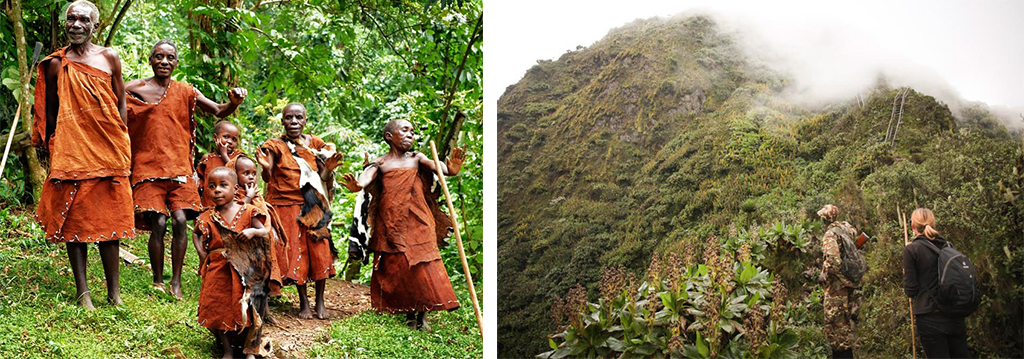
Explore & stay
Mgahinga Gorilla National Park experiences two rainy seasons: one from February to May and a second from September to December. However, rain is possible at any time of year, and visitors should always be well-prepared to waterproof valuables. Comfortable clothes with long sleeves and layers and a sturdy pair of boots are essential to making the most of the Mgahinga experience.
A luxury lodge near the park’s gate offers the only tourist accommodation available within Mgahinga itself, but there are several budget and mid-range camps on lodges along the park’s outskirts. Those wishing to travel slightly further afield could also explore options on the banks of nearby Lake Mutanda or Lake Bunyonyi, both astonishingly beautiful, framed by lush hills and dotted with tiny islands.
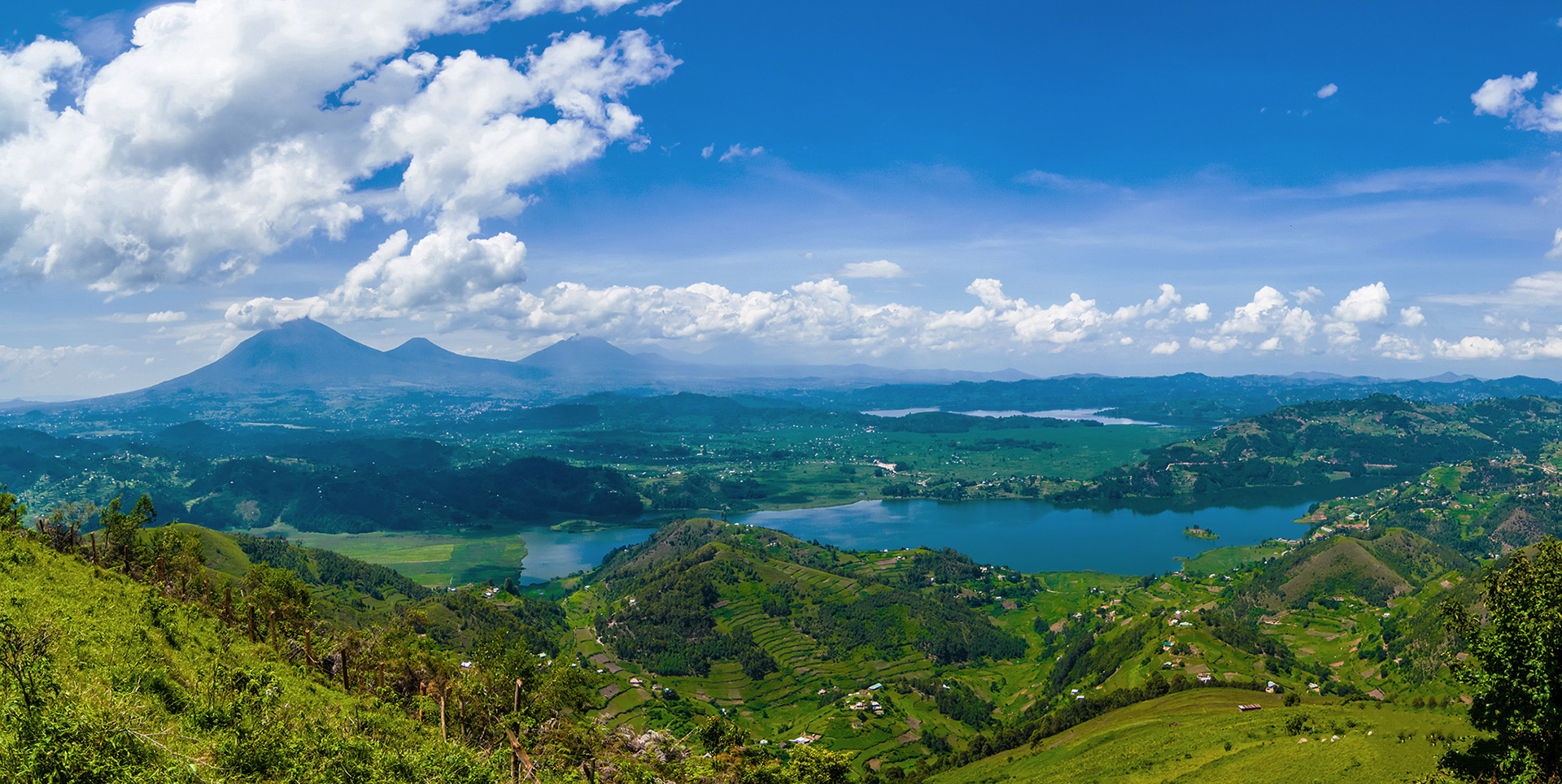
Final thoughts
While Mgahinga may be small compared to its neighbours, the national park is a vital cornerstone of the Greater Virunga Ecosystem, one of Africa’s most mysterious and untamed wildernesses.
Resources
Read more about some of Africa’s must-visit mountain kingdoms here.
For more info on gorilla trekking, and to check out our ready-made gorilla-trekking safaris, click here.
To comment on this story: Login (or sign up) to our app here - it's a troll-free safe place 🙂.![]()




